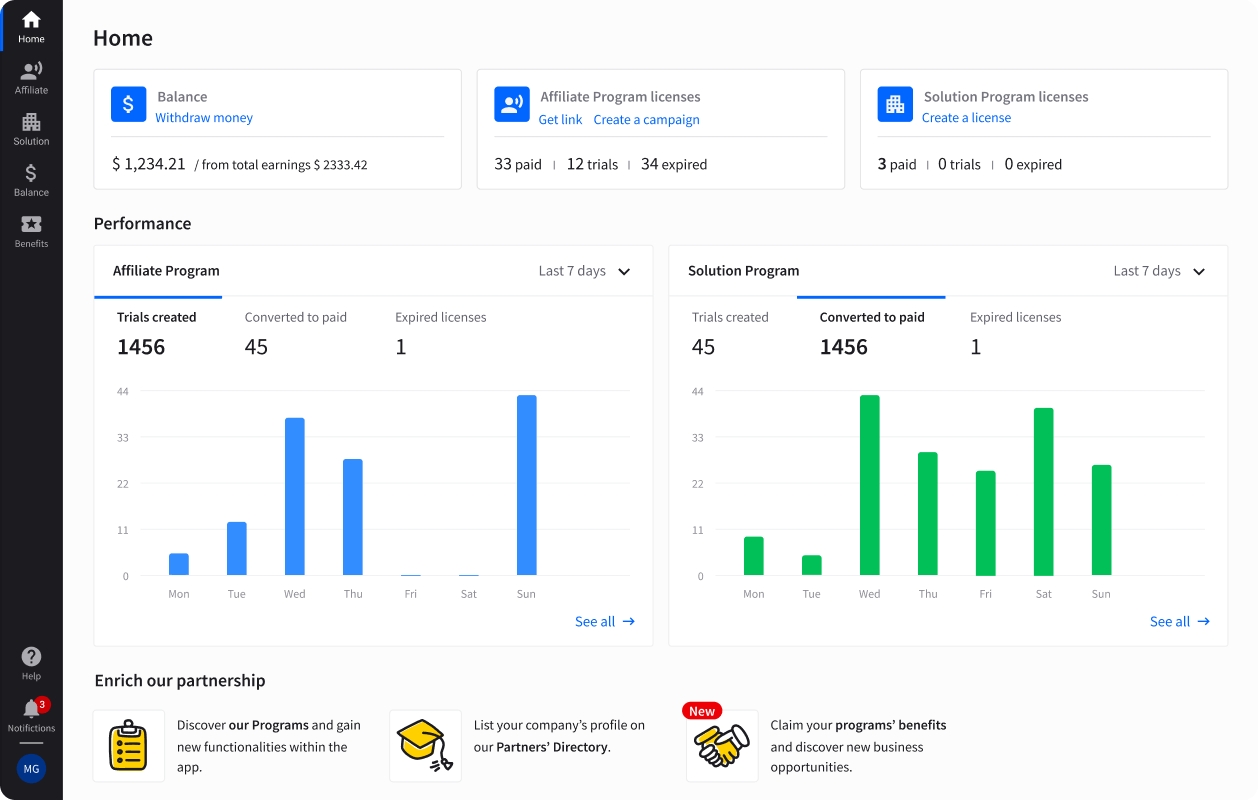Showing top 0 results 0 results found
Showing top 0 results 0 results found
10 Personalized Marketing Strategies (Beyond “Hi {Name}”) That Actually Work

Long gone are the days when you could just throw your customers an attractive offer and watch them running to you with purchase in mind. Offering high-quality products or positioning your products to match everyone’s pocket at lower quality is simply not enough anymore.
Today, customers want a highly tailored, hyper-personalized experience if they are to choose your products & services over the competition.
Devising personalized marketing strategies that offer tailored experiences is a necessity, not a choice. However, going deep and unearthing their expectations, interests, and desires requires a lot of dedication, an honest focus on their needs, and the right data and tools to analyze them.
In this article, we will focus on the top 10 personalized marketing strategies that actually work while deeply engaging your customers and catering to their needs.
1. Personalized handwriting
Personalized handwritten notes are something that never gets old. Luckily, even in these modern times, there are handwritten letter services that can create original, evergreen wish cards, thank-you notes, and whatnot. You can use it to follow up, welcome new customers, or wish them a happy birthday in a personalized way, authentic way.
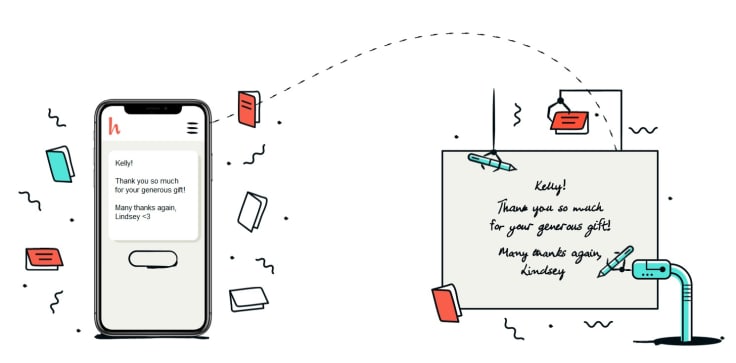
Just look at the picture above — it is a great comparison between generic, computer font vs highly personalized one.
Now, imagine sending paper-based birthday wish cards to your customers using the writing on the left. Not only will it make the recipient feel special and more than just a number (that got an automatically scheduled, generic birthday card), but it will make you stand out from the competition.
Handwritten notes may seem like a small, outdated thing, but they can do so much by helping you build deep, long-lasting relationships with your customers.
2. Personalized videos
There are a lot of great services that can help you create custom personalized videos. Personalized videos work because they combine personalization with one of the most powerful formats — video, which is proven to drive engagement and sales.
With this method, you can deepen relationships and grab your customers' attention by communicating with them via video tailored to their unique needs and preferences. Video is also great at transferring emotions and context, so you can clearly communicate your message adding the personalization that makes all the difference.
In the picture below, you can see an example of how a personal video looks.
It was sent by a photographer via email to someone who bought his ebook to say thanks and follow up. This is a great way to engage your customers and genuinely communicate with them.
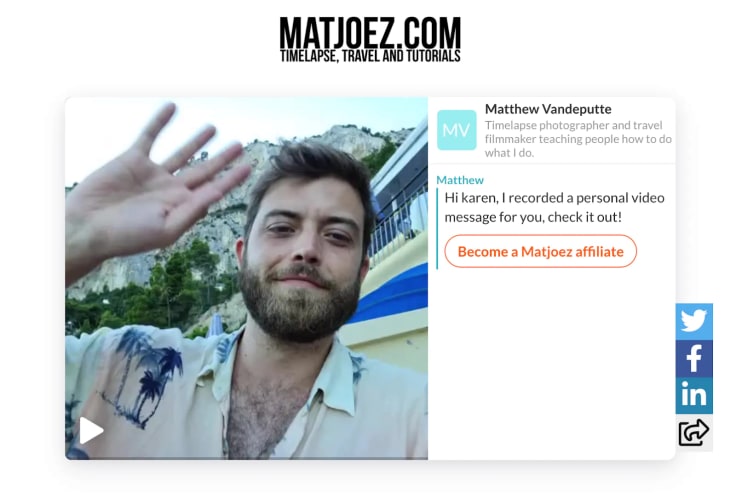
Furthermore, this photographer managed to get 82% opens, 80% view rates, and 29% response rates on his personalized emails!
3. Personalized email campaigns
With the help of data-driven automation tools, you can send highly personalized emails that are tailored to recipients’ hobbies, interests, previous website activity, or purchase history.
There are many factors that affect if the recipient will open an email, and the most important ones include:
- How interesting or intriguing the subject line is
- How recipients perceive the relevancy of the content
- Who sent the email
With personalization, you can boost all of these three and increase your open and click-through rates.
You can use email personalization to:
- Send trigger-based emails — You can use this strategy when a certain condition is met. This can include abandoning a shopping cart, user inactivity for a period of predefined time or visiting a specific webpage, or viewing a certain product.
- Make recommendations based on previous purchase history — Send emails to your customers when similar products to the ones they used before become available.
- Send product updates or reminders — You can remind your customers that their maintenance milestone & subscription expiry is approaching.
4. Product recommendation
This strategy is successfully used for Netflix’s “What to watch next” recommendations and it can also be leveraged by eCommerce stores for product recommendation. Having the right tools to analyze and implement customers’ previous activities or purchase history into custom recommendations will skyrocket engagement and sales.
This is crucial for companies that offer an array of products (like eStores) since their prospects or customers don’t have all that much time and patience to browse through a myriad of pages.
Offering highly relevant recommendations that cater to the unique needs of every single customer will make for a mutual win-win. They’ll get relevant and rich experiences that will maximize their satisfaction and ultimately drive their purchasing decisions.
5. Personalized website experience
One of the widely used personalized marketing strategies is personalizing your visitors’ website experience. You can create a custom website experience for them depending on if they are customers, regular or first-time visitors.
You can do this by creating tailored experiences with multiple touchpoints that give each user a personalized approach. This strategy is proven to increase visitor satisfaction, and in turn, conversions.
These are some of the most common types of website personalization:
- Dynamic personalization — Show each user content relevant to their location, time of the day, important dates (like holidays), etc.
- Landing page — Display different landing pages depending on the channel that pulled users to your website. These channels can be social media, ads, affiliate links, etc.
- Copy — You can personalize communication with users by tailoring your CTAs, promotions, social proof, etc. For example, if your visitor is from a SaaS industry you’ll want to show him video testimonials from SaaS clients you worked with.
- Search personalization — suggest search results based on visitors’ behavior (in real-time) and preferences.
- Popups — Promote relevant offers using popups
- Recommendations — Offer recommendations based on visitors affinity
6. LinkedIn personalized outreach
There are a lot of great LinkedIn automation tools that can help personalize your outreach efforts on LinkedIn. With automation, acquiring strong data to create personalized strategies, messages and searches are frictionless.
LinkedIn can also give you a lot of powerful insights since the majority of topics revolve around business. You can leverage this by acquiring several types of data:
- Specifics about your audience
- Preferences, interests, and hobbies of your target audience
- Degree, job history, employment status
- Demographics
When you extract this data you can successfully segment your audience into micro-audiences and use their specifics to target them via InMail, LinkedIn groups, and comments.
This data can help you generate warm leads by including highly personal details in your messages. It can also help you position yourself as a thought leader or SME (Subject Matter Expert) which builds reputations and acts as social proof that vouches for your company’s expertise.
You can see an example of creating a highly personalized message for cold outreach in the picture below:
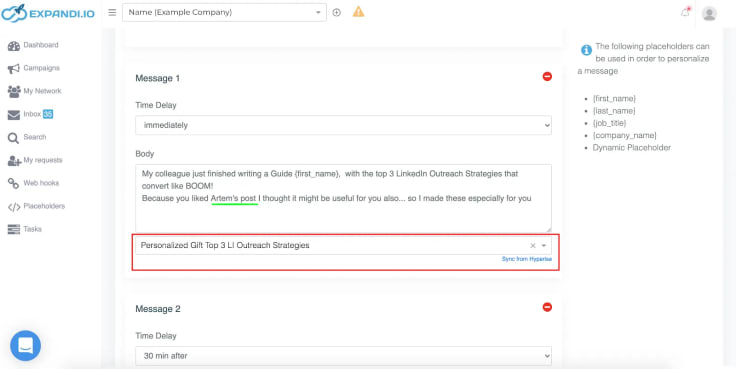
In the panel on the right, you can see the elements that can be personalized. Also, the most important detail is highlighted in green “Artem’s post” and it is used to boost relevancy and build relationships.
The fact that you are giving something (a guide in our case) based on the recipient’s actual engagement with someone they know or follow (Artem in our case) is powerful and makes you stand out. It makes a recipient perceive you like a diligent and dedicated individual (or company) that did their research and offered them something of actual value.
7. Sending behavioral mails
You can send emails tailored to users’ previous activity on your website or eStore. For example, you can let them know that the products they searched (but were out of stock) are now available. You can also notify them when there’s a new product available, similar to those they’ve previously been interested in.
You can also track your audience’s activity like shared posts, videos watched, comments, their wish list contents, etc. Afterward, you can send automated, predefined emails t (matching the specified activity) with the goal of converting them to customers.
Moreover, there are options to set up predefined parameters (like the time spent browsing a certain webpage, blog article, or product page) to automatically execute relevant emails. These emails can offer discounts on the products a visitor previously watched or promotions regarding relevant categories.
8. Dynamic content emails
You can create emails with content (like images) that adapts to their preferences and interests. For example, if you run an online pet shop store, you can send emails about new offers to your subscribers, that convey the same message (email copy) to all. However, with dynamic content, the images in that email will be different and tailored to each subscriber’s interests (cats, dogs, turtles, etc).
You can acquire all of this powerful data by asking them a couple of questions on their preferences when they subscribe for the first time.
If we follow the above pet store example, you can ask users to put a checkmark next to the category they’re interested in.
You can see how Petco did this in the picture below:
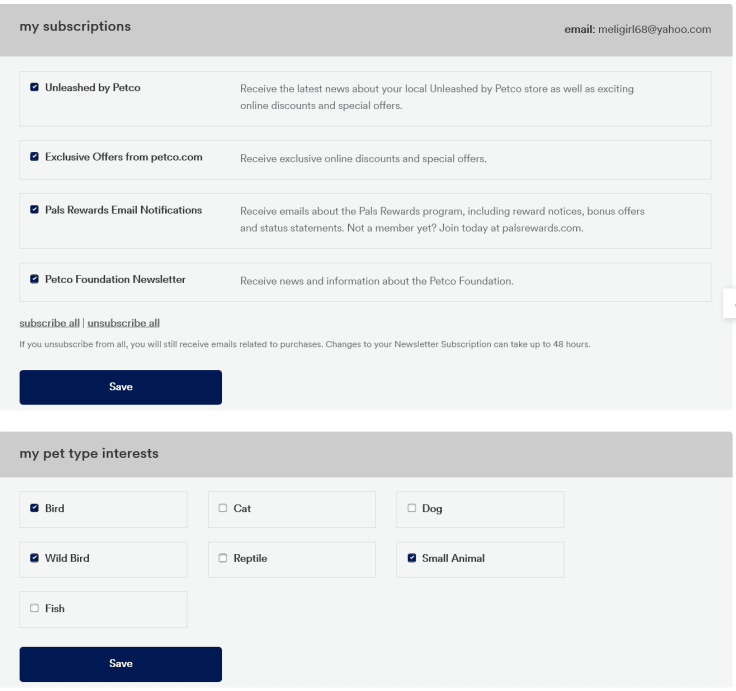
9. Personalized discount
Personalizing discounts is also a great example of an effective personalized marketing strategy. It is usually based on the customer’s previous purchase history. That way, customers will get relevant offers which can increase customer retention and brand awareness.
Instead of sending one-size-fits-all emails, you should use your customers’ data to tailor custom discount offers.
That data can include:
- Their location, time zone, calendar — To give your customers discounts on winter or summer collection depending on the season tied to their location
- Demographics (gender, age, etc) — You can create special discounts on Women’s day for all your female customers and further drill it down using age ranges.
- Their preferences — You can track your customers’ profile updates and search history to uncover and drive your discounts by matching them to their preferences in real-time.
- Previous purchase history and activity — By using previous purchase data, you can gauge what category they prefer or need the most and give them discounts for according products.
10. Personalized CTAs
By personalizing CTAs to reflect visitors’ & customers’ interests and preferences you can significantly increase conversions. You can use information you already have on customers to display relevant CTAs, uniquely tailored to their personality, activity, and needs.
Furthermore, you can create rule-based CTAs that will display a predefined CTA when your visitors & customers meet a certain condition.
Personalizing CTAs (following HubSpot’s great example) encompasses creating custom CTAs based on:
- Location — country, region, or city
- Device type — android, iOS, PC, tablet, etc.
- Referral source — external site, ad, email campaign, organic search, etc.
- Stage in the lifecycle — subscriber, lead, MQL, SQL, customer, advocate, etc
- Contact’s list membership
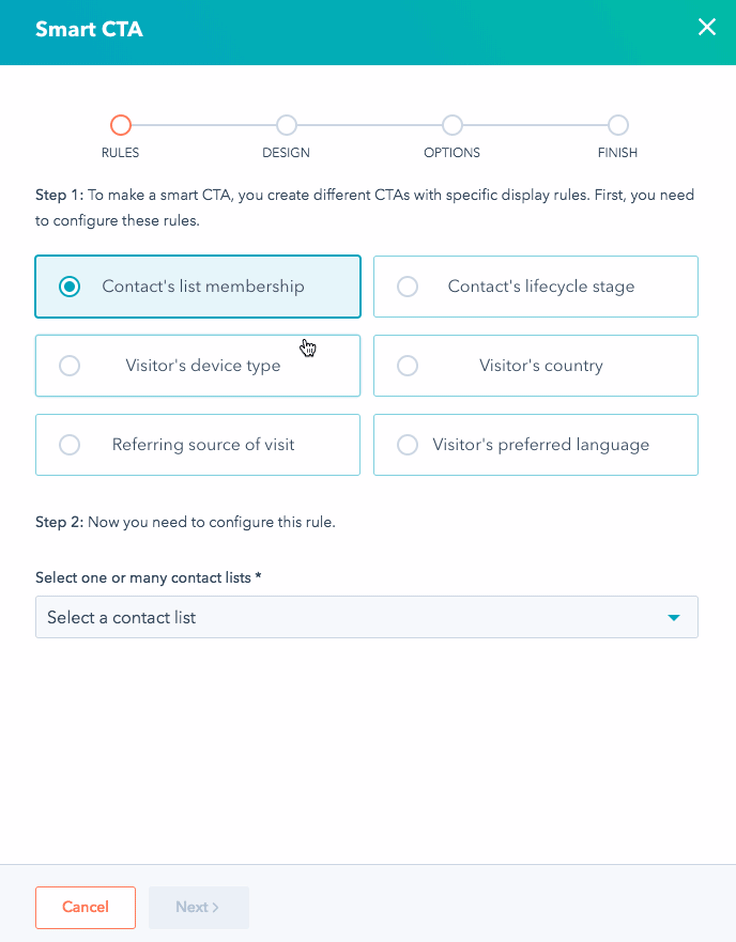
When you add the rules, you can get custom CTAs that appear when, for example, a visitor watches 3+ videos on your product page.
Intelligent CTAs like this will boost conversions by intuitively leading your customers down your conversion funnel. What’s more, they will be perceived as a desirable, needed interaction with your company that enriches their journey.
Final thoughts
Personalization is a key element of every marketing strategy that drives success. With personalization, you can unlock your business growth by having satisfied customers, offering them hyper-relevant solutions, and understanding their needs.
However, there is no ideal strategy nor the perfect way to conduct it. You need to tailor it to your business’s specifics and objectives, as well as your audience.
Additionally, using only one personalized marketing strategy isn’t enough. You need to pick a few of them and see how to exactly fit them in your business framework. For example, sending personalized notes to recommend relevant products is far more effective than just using one of these.
The best way is to use these strategies in synergy and figure out how they can supplement each other.



